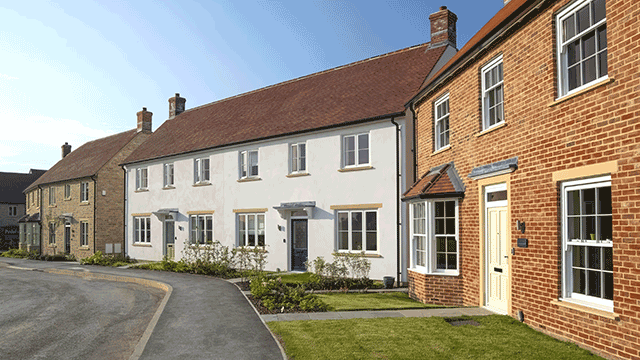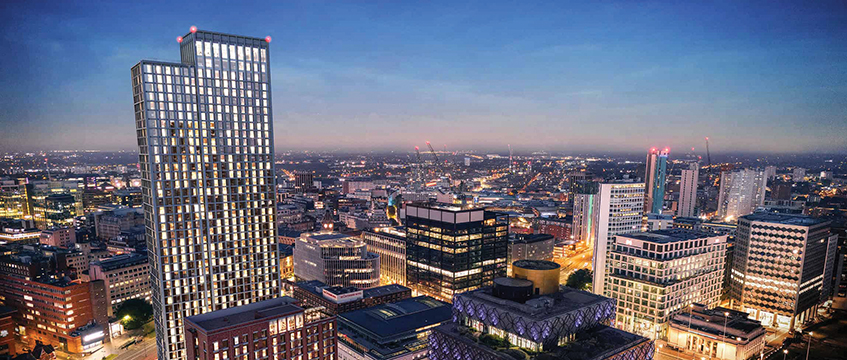COMMENT The built environment is responsible for almost 40% of CO₂ emissions globally, with a growing impetus for developers to prioritise whole life carbon. One solution is to incorporate reused materials in projects, and this is where structural steel holds great potential – as one of the biggest offenders for embodied carbon but also as an inherently recyclable material.
The wider steel industry accounts for approximately 8% of worldwide emissions, and traditional production methods have significant carbon implications. Research shows that blast oxygen furnaces release circa 2,450 kgCO₂e per tonne of steel, while the electric arc furnace method emits 330 kgCO₂e per tonne. Reused UK steel, meanwhile, produces around 50 kgCO₂e per tonne of steel, making it 97% less carbon intensive than blast oxygen furnaces – an astonishing difference.
Supporting circularity
Transformation is underway, as both Tata Steel and British Steel are investing into eliminating blast oxygen furnaces in favour of electric arc furnaces at various sites. Still, using reclaimed steel in new buildings is more carbon friendly than even the greenest production and supports circularity. It’s a compelling proposition but, to take reused steel from theory to reality successfully, developers need to be alive to the challenges and act early.
Reused steel goes through a rigorous testing process, from the initial visual inspection, geometric validation and usable length estimation to hardness testing, grading, labelling and destructive testing before a bespoke product passport is formalised (for greater transparency and accurate tracking). It is possible to secure an environmental product declaration too, a certification that helps with benchmarking carbon.
The market is relatively new, so competition is high and limited availability is one of the principal roadblocks. Stockpiles are increasing although, as prime developers turn their attention to reused steel, demand may well outstrip supply. Additionally, fewer buildings are likely to be demolished in the future, and the “retrofit first” approach will also impact availability and price volatility.
It is easy to assume that reused steel automatically represents a commercial discount but, in the past two years, it shifted from 10% cheaper to 5-10% more expensive due to supply-demand dynamics. Recycling suppliers are growing to meet demand, hopefully resulting in future prices softening and, in an ESG-conscious landscape, reused steel helps to deliver a green premium for completed developments.
Early supply chain engagement is essential, and this often takes the form of a pre-construction services agreement with a steel sub-contractor. Committing to reused steel earlier in the development cycle (ie, before planning approvals) is difficult as it carries some increased commercial risk, but is necessary to secure stock, mitigate against future price rises, minimise programme impact and maximise the benefits of re-use.
For example, at One Exchange Square, where M3 is development manager on the delivery of a net zero workspace, we partnered with our main contractor Multiplex, along with a metal recycling company which located existing steel beams and columns, meeting our criteria from five UK donor buildings and enabling the scheme to incorporate circa 90 tonnes of reused steel. Our team is also supporting on the mixed-use redevelopment of 180 Piccadilly, which will contain over 70% recycled steel.
It’s not always possible to find steel members with the most efficient cross section, so designs may need to be tailored to what is available. Using standard UB and UC sizes and opting for a more regular structural grid rather than column-free floorplates increases the opportunity for reuse; the ultimate objective is to use less, and maximise circular principles.
The placement of relevant insurers is an important step, notably latent defects insurance. Although the insurance sector is not averse to covering properties featuring reused steel, developers must be cognisant of the stringent testing and certification process involved to anticipate insurers’ questions, and it is crucial to engage insurers early in the process.
Benefits that outweigh challenges
It is time for developers to acknowledge the intrinsic value of the steel in their buildings and think about salvage rights, as mining their existing assets can bring tremendous climate and commercial benefits as well as being a strong market differentiator. It is better to incorporate some rather than no reused steel and, if necessary, combine recycled with other methods such as electric arc furnaces. Flexibility and early planning are key to success.
Reusing steel is certainly not the easy way out and requires far more effort, education and meticulous planning than the usual way. However, with the right approach and understanding how to navigate the typical challenges, it’s a viable and truly progressive option, which can help to separate your development from the rest.
Alec Smith is project director at M3 Consulting











